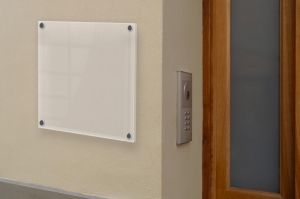Geofences have become a part of our world, playing a significant role in how businesses and individuals interact with their surroundings. What exactly are geofences? What significance do they carry in today's tech-savvy era? This piece will delve into the concept of geofences, examine their applications, and illuminate how they impact our routines.
Defining Geofences
Are you wondering about geofence meaning? In simple terms, a geofence serves as a boundary within the physical realm. It represents a perimeter established through GPS or RFID technology that can encompass an entire city block or shrink to just a few meters in size. When an individual enters or exits this designated area with their device or wearable tech, like a smartwatch, actions can be automatically triggered.
Business Applications
The adoption of geofencing has left its mark across sectors. For businesses, it opens up possibilities to engage with customers at the right time and place. By leveraging location-based marketing strategies, companies can send out push notifications promoting offers or discounts to customers within their geofenced areas.
This targeted approach empowers businesses to influence consumer behavior effectively while driving foot traffic to their stores. Imagine walking past your coffee spot and receiving a notification about its special as you step into its geofenced area. It might just tempt you to swing by for a cup of your go-to brew.
Improving Customer Experience
Apart from the marketing perks, businesses can use geofencing technology to elevate customer satisfaction in specific sectors. In the travel industry, hotels could use geofences to welcome guests as they arrive at airports or train stations, enhancing brand image and adding a personalized touch to each guest's arrival.
Moreover, museums and exhibitions have also embraced geofencing features. Visitors entering zones within these venues can receive extra information about artworks or exhibits through mobile apps or audio guides. This interactive and educational encounter nurtures a bond between visitors and the content they're exploring.
Ensuring Safety and Security
Geofencing has proven its worth in ensuring safety and security in professional environments. Whether monitoring assets or bolstering child safety measures, this technology enables tracking and real-time alerts.
For example, parents can set up geofences around designated areas for their kids. If a child strays beyond these boundaries, a quick alert will be sent to the parents, giving them peace of mind and allowing them to respond promptly.
Another practical use of geofencing is securing areas within office premises. By setting up boundaries, companies can ensure that only authorized personnel can access information or areas requiring special clearance.
Optimizing Fleet Management
Geofences have made an impact in fleet management, benefiting industries like transportation, logistics, and delivery services. When geofencing is implemented, fleet managers receive real-time updates on their vehicles' whereabouts.
This technology enhances route planning by analyzing data on travel times in specific regions. It also facilitates load distribution by keeping track of vehicles near customer locations. Geofencing helps reduce detours while improving delivery schedules, ultimately leading to customer satisfaction.
The Future of Geofence Technology
With technology advancing, we can expect developments in geofence usage. The increasing connectivity among devices through the Internet of Things (IoT) will impact how we engage with our surroundings. From cars syncing with traffic signals in areas to smart cameras activating upon detecting any suspicious activity; the potential applications for geofences are vast as these technologies merge.
Furthermore, the progress in augmented reality (AR) has the potential to change geofencing, providing an engaging experience within specific areas. Just picture strolling through a neighborhood and witnessing your smartphone projecting elements that depict important historical events as you move past designated geofenced spots.
In summary, geofences have evolved into tools that shape our realm and profoundly impact various aspects of our daily lives. Whether it involves running marketing strategies, enhancing customer interactions through location-based services, ensuring safety and security measures, optimizing fleet management operations, or exploring the possibilities of upcoming technologies, geofences are continuously reshaping our digital environment.
In today's interconnected world, where customized experiences and operational efficiency take precedence, businesses across sectors must delve into the potentials presented by geofencing technology. By harnessing its capabilities, companies can boost engagement levels, enhance customer satisfaction rates, safeguard their assets, and establish a competitive edge in their respective industries. So, embrace the influence of geofencing. There are opportunities waiting to be explored!






